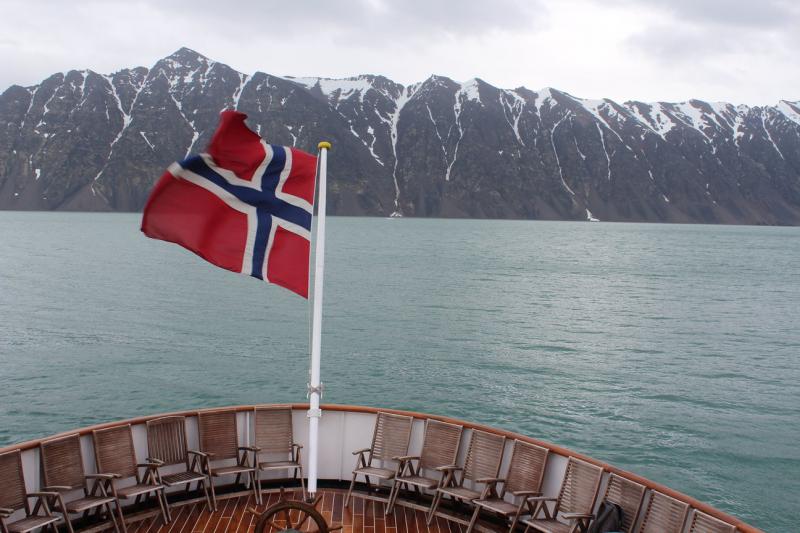The Association of Arctic Expedition Cruise Operators (AECO) has responded to the Norwegian government’s recent announcement that it is considering a general ban on heavy fuel (HFO), size limitations on cruise ships and other measures to manage the growing tourism in Svalbard.
AECO said it has long been a supporter of a ban on the use and carriage of HFO in Svalbard and the Arctic. According to a prepared statement, AECO was an early signatory of the Arctic Commitment which calls for a phase-out of HFO from Arctic shipping. The association stated that the current practice among its members is to refrain from using HFO when sailing in the Arctic. This practice has been formalized as a mandatory guideline for a self-imposed ban on the use and carriage of HFO by members operating in the Arctic.
When it comes to size limitation on ships, AECO Executive Director Frigg Jørgensen stated that the association’s core membership is the Arctic expedition cruise segment. As such, members operate small and medium sized vessels carrying up to 500 passengers, with the average passenger capacity ranging from 150 to 200 passengers.
“The ships are less reliant on port infrastructure and are able to visit remote sites in a sustainable manner,” Jørgensen said. “Smaller passenger groups can also be more manageable for Arctic communities receiving them as visitors. In addition, a recent study from Svalbard shows that the expedition cruise vessels on average contribute 5.2 times more in local income per passenger compared to conventional cruise tourism. From a search and rescue perspective smaller vessels may also be easier to manage.
“Tourism is a major industry in Svalbard and the local community is depending on income from the cruise tourism in general. Before any regulations are enforced, the impact this may have on local business and communities should be researched, and local as well as industry stakeholders should be consulted.”
According to the government’s press release, it will also consider additional measures to protect wildlife, nature and cultural heritage, which may include stricter rules about polar bear disturbance, and landings in fragile areas.
AECO said it has developed and imposed guidelines and standards to ensure responsible and considerate operations. This includes guidelines for observation of polar bears and other wildlife, biosecurity and operational guidelines dealing with safety and preparedness. It also includes site-specific guidelines that provide detailed instructions on how to carry out safe landings without disturbing local wildlife, natural features and cultural heritage. Site-specific guidelines have been made a legal requirement for visiting certain landing sites. AECO stated that it is in support of making site-specific guidelines for ship landings a legal requirement in nine additional sites proposed by the government in the management plan for West-Spitsbergen national park.
AECO’s guidelines are mandatory for all AECO members.
AECO stated that it also requires that staff working for members complete and pass an online assessment about legal framework, guidelines and considerate behavior. AECO has also enforced an observer scheme and members of AECO must carry an observer that will help ensure compliance with legal framework, guidelines and standards.
Search and rescue capacity may also be a more of a concern associated with larger vessels, according to AECO. Since its establishment in 2003, the association has been forum for dialogue and collaboration between the industry, search and rescue (SAR) entities and relevant authorities. The goal of this collaboration seeks not only to lower risks and strengthen preparedness in the expedition cruise sector, but also focus on how the industry can be an asset in SAR operations and contribute to enhanced marine preparedness in the Arctic.
According to AECO, expedition cruise ships sail to remote areas of the Arctic during the summer season and will therefore often be one of the nearest available resources if another vessel or even a local community experiences difficulty and need assistance. In such cases, the expedition cruise ships can act as a vessel of opportunity to the vessel in distress, the association said, and noted that since the Arctic is characterized by long distances and limited search and rescue capabilities, vessels of opportunity can be an invaluable asset in SAR operations in the Arctic. In many cases, a vessel of opportunity will be able to reach a vessel in distress long before search and rescue vessels or other assistance can arrive on site.




